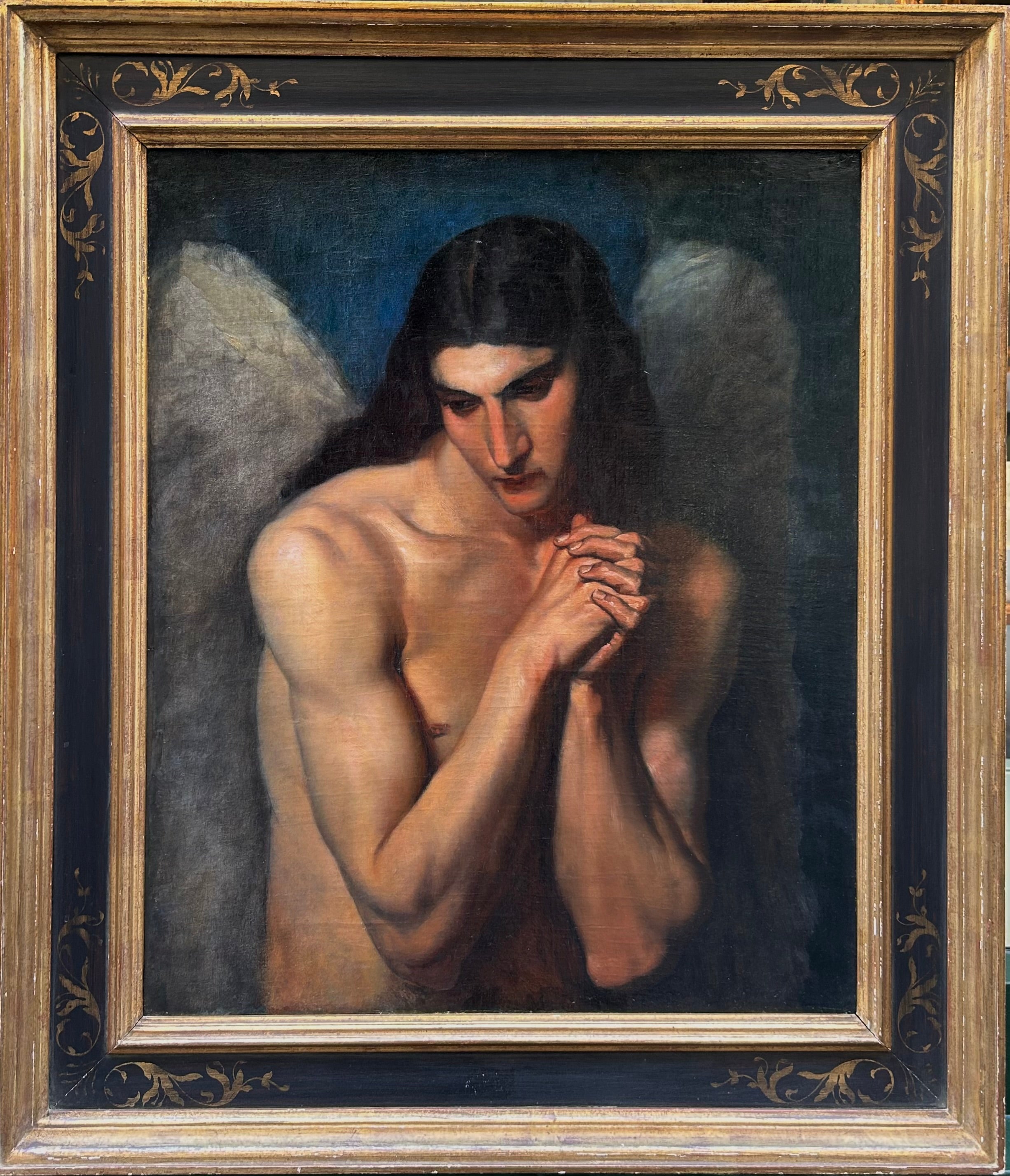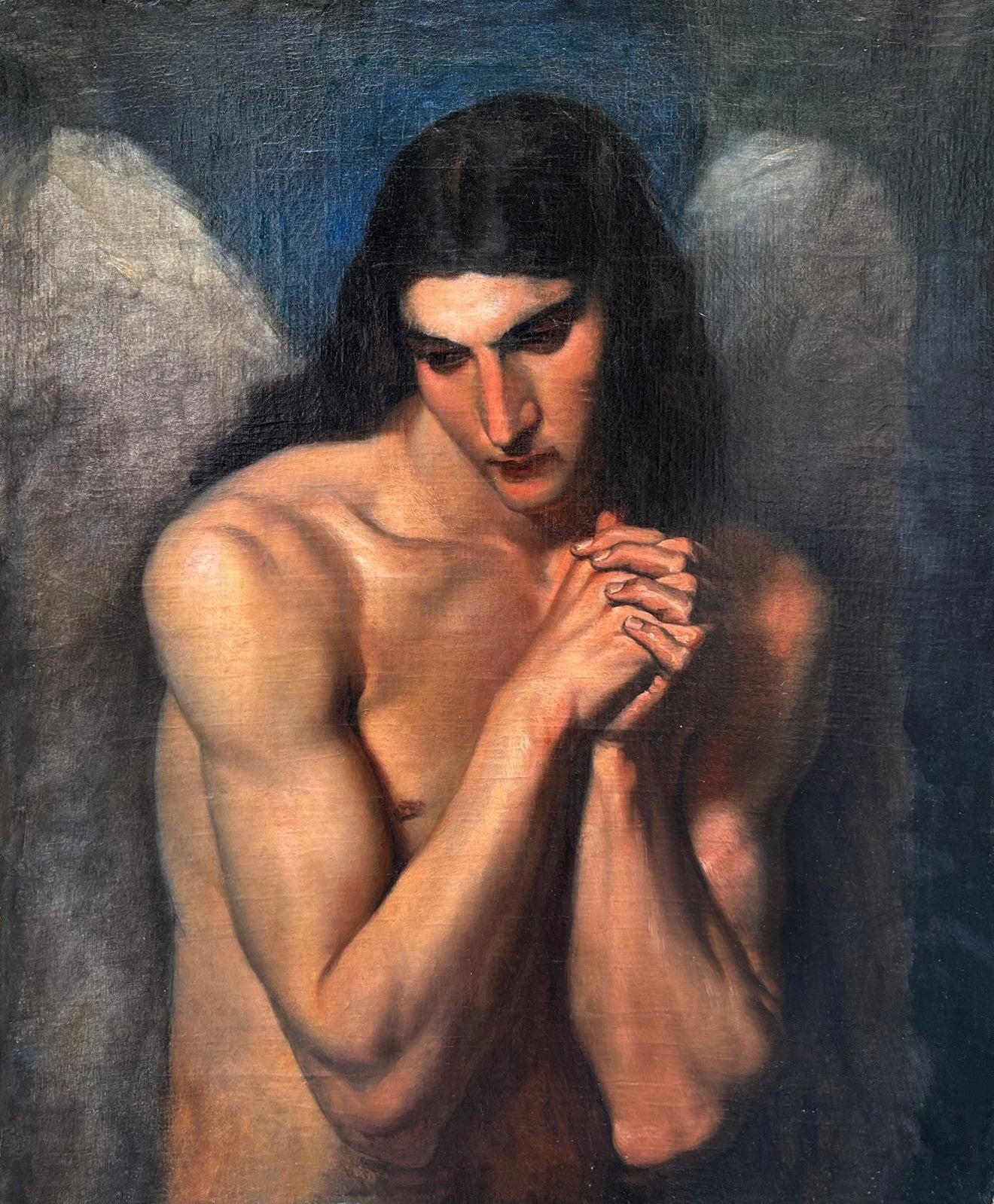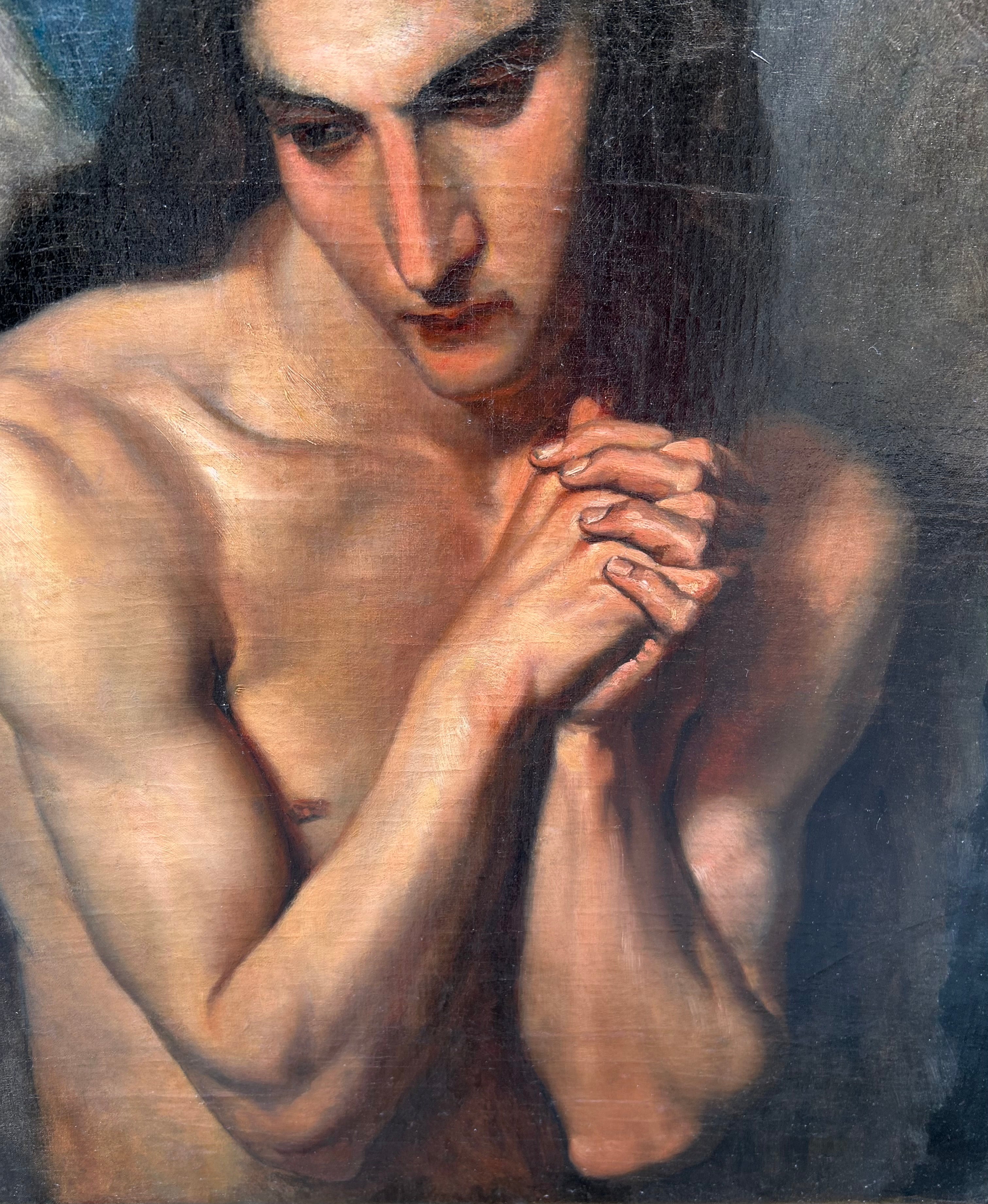

Attrib. Alphonse Muraton
Angel in Prayer
Oil on canvas
Image size: 27 9/16 x 23 inches (70.1 x 58.4 cm)
This painting of an angel in prayer is immediately visually striking, with the hazy wings and unembellished blue background ensuring that the viewer’s focus remains firmly on the angel. The downcast eyes and nakedness of the figure imply a certain vulnerability, and possibly shame - the figure is turned away from his act of devotion, but engages with prayer nonetheless. Perhaps, then, this can be read as an act of repentance - bearing all, in the literal sense, in front of God.
The influence of the French academic movement is evident in this work, as the muscularity of the angel is inspired by the physiology of statues from Greco-Roman Antiquity. The light play across the skin of the angel is a beautiful example of chiaoscuro and heightens the drama of the scene, encouraging the viewer to contemplate the light of God. There is particular attention to detail in regard to the hands and arms of the angel, which are rendered realistically with different flesh tones denoting areas of light and shadow. The masculine face and naked body are unusual aspects for a representation of an angel, who are typically depicted clothed and with a beautiful, androgynous face. This suggests that the painting is to be read more allegorically, with a more humanised angel displaying his vulnerability in an act of prayer to God.
Alphonse Muraton
Muraton was born in Tours in April 1824. He attended the School of Drawing in Tours, before studying under the acclaimed artist Michel Martin Drolling. In 1841, he enrolled at the Ecole Royale des Beaux-Arts and worked for the Spanish royal family in the same year.
He began to appear in the Paris Salon from 1859 with portraits and genre paintings, and won a Medal in 1868 for his painting of The Two Hermits. This work was purchased on the Civil List by Napoleon III and displayed in the Louvre before being sold to Empress Eugenie, earning Muraton great recognition. Whilst portraiture remained his main focus with painting, Muraton also created a number of religious scenes, and worked predominantly with the Academic tradition. Both his wife and son were artists, indicating the strong artistic legacy that Muraton had begun to found.
Alphonse Muraton passed away in December of 1911. His works are represented in collections across France, including in Tours, Avignon, Reims, Versailles and the Royal Palace at Aranjuex, Madrid. During the course of his life, Muraton exhibited in France at the Paris Salon, as well as at the Exhibition of Fine Art in Madrid in 1866, the International Exhibition in Munich in 1869, Cincinnati Industrial Exposition in 1875, and in Philadelphia in 1876.





